Instructional Series
Welcome to the English medium literacy instructional series teaching and learning resources for years 1 to 8.

- Gold
- Purple
- Green
- Orange
- 2
- 3
- 4
- 1
- 4
- 5
- 6
- 7
- 8
- 3
- 2
- English
- Social Sciences
- The Arts
- Health and Physical Education
- Science
- Technology
- Learning Languages
- Mathematics and Statistics
- Non-fiction
- Fiction
- None
- Nature of science
- Living world
- Nature of technology
- Geometry and Measurement
- Planet Earth and beyond
- Statistics
- Critique evidence
- Engage with science
- Articles
- Stories
- Poems
- Plays
Search results
78 items - Showing 51 - 60
-
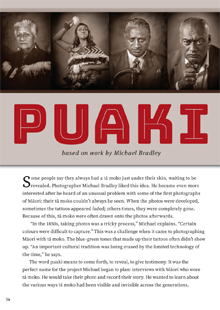
Puaki
based on work by Michael Bradley
Tā moko is the art and practice of traditional Māori tattoo, a taonga that almost disappeared as a result of colonisation. Puaki means “to come forth, to reveal, to give testimony”. Photographer Michael Bradley used this concept as the basis of a project exploring ways that tā moko has been both visible and invisible across the generations. In this article based on his project, four people explain why they proudly wear tā moko and how their facial moko connect the past with the present. The story is complemented by stunning portraits of each storyteller.
-
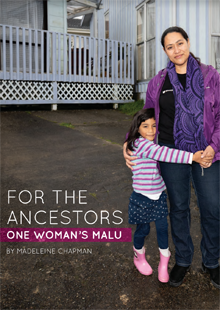
-

Listening Eyes, Speaking Hands: The Story of Deaf Education in New Zealand
by Renata Hopkins
This article explores how attitudes to deafness have changed over time. The article includes a social history of the van Asch Deaf Education centre, which opened in 1880.
-
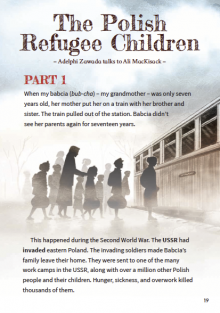
The Polish Refugee Children
by Ali MacKisack
This true story of Adelphi Zawada’s grandparents will be engaging for students in year 4, although it is complex and presents some interesting challenges. Adelphi tells how her grandparents, as children, along with over a million other Polish people, were sent to work camps in Russia following the invasion of their country by the USSR during the Second World War.
-
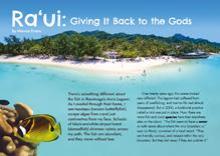
Raʻui: Giving It Back to the Gods
This article explores a scientific issue from a Pacific worldview. It describes how the people of the Cook Islands have attempted to manage and protect their marine resources with the tradition of ra‘ui. The article highlights the very real issues that make success difficult and the diversity and validity of different people’s perspectives on ra‘ui.
-
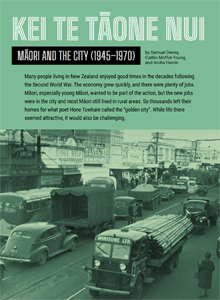
Kei te Tāone Nui: Māori and the City (1945–1970)
by Samuel Denny, Caitlin Moffat-Young, and Aroha Harris
The post-Second-World-War era in Aotearoa New Zealand saw one of the fastest rates of urban migration in the world, with Māori migrating to cities in large numbers to take advantage of new economic opportunities. The “golden city” offered much, but it came at a high price. Despite an unquestioned narrative in Pākehā communities that New Zealand’s race relations were world leading, Māori moving to the city encountered prejudice and discrimination at many levels. Māori responded to these challenges in multiple ways, for example, by establishing formal and informal groups that strengthened collective expression of Māori cultural values and practices. By gathering together to debate and take action on key issues, the seeds were sown for the modern Māori protest movement as well as the forging of a new urban Māori identity.
-
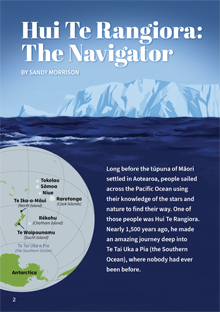
Hui Te Rangiora: The Navigator
by Sandy Morrison
Long before the tūpuna of Māori settled in Aotearoa, people sailed across the Pacific Ocean using their knowledge of the stars and nature to find their way. One of those people was Hui Te Rangiora. Nearly 1,500 years ago, he made an amazing journey deep into Te Tai Uka a Pia (the Southern Ocean), where nobody had ever been before.
-
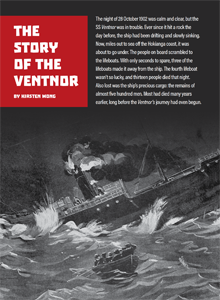
The Story of the Ventnor
by Kirsten Wong
In 1902, thirteen lives were lost when the SS Ventnor sank off the Hokianga coast in Northland. The ship was carrying the carefully packaged bones of almost five hundred Chinese goldminers on their way home for burial. Despite immediate efforts to retrieve the bones, the ship and its precious cargo were lost. Over the following months, some of the bones washed up on Hokianga beaches. Most of these bones were collected and cared for by local iwi, with the stories of the shipwreck and the Chinese kōiwi passed down across generations of Māori. Over one hundred years later, some of the decendants of the goldminers discovered the fate of the bones and the kindness that iwi had shown and travelled north to learn more. A shared respect for the ancestors has since drawn together Chinese New Zealand communities and the iwi who are now kaitiaki of the goldminers’ remains.
-

A Real Steal
by James O’Sullivan
An art gallery has a new exhibition and it’s hired a security guard to make sure no one touches the paintings. A visiting art critic has strong opinions about the value of the works, but things start going wrong when a thief enters. The humour in the play comes from the diverse array of characters and their changing opinions on the value of the “art”.





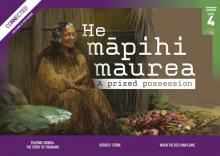
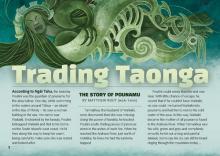

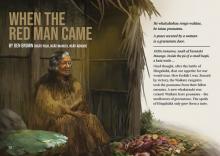
 Literacy Online home
Literacy Online home
